List of World Heritage Sites in the Philippines
The UNESCO (United Nations Educational, Scientific and Cultural Organization) has designated six World Heritage Sites in the Philippines. The UNESCO World Heritage Sites are places of importance to cultural or natural heritage as described in the UNESCO World Heritage Convention.
The Philippines, following its ratification of the convention on Thursday, September 19, 1985, made its historical and natural sites eligible for inclusion on the list. The Philippines had its first sites included in 1993, and since 2014, has six sites on the list spanning nine locations. Of those six sites, three are cultural and three natural. In 2015, the 28 sites in the 'Tentative List' were revised. Currently, the Tentative List for possible nomination in the future contains nineteen submissions.
The Philippine National Government, the National Museum of the Philippines, the University of Santo Tomas, the UNESCO Commission of the Philippines and other concerned parties encourage more historic churches, municipal and city governments, provincial governments, national parks, and private entities to submit their nominations of sites that they have jurisdiction of to UNESCO to revitalize heritage conservation in the country and to internationalize the importance of heritage conservation in the Philippines, which is seen to be the greatest frontier of westernized Asian nations in a hastily industrializing Asia.
World Heritage List
| Type (criteria) | Site | Location | Description | Image | Year | Ref |
|---|---|---|---|---|---|---|
| Cultural: (ii)(iv) | Baroque Churches of the Philippines | Paoay Church in Ilocos Norte | The Church of San Agustín at Paoay is the most outstanding example in the Philippines of 'Earthquake Baroque'. Fourteen buttresses are ranged along the lines of a giant volute supporting a smaller one and surmounted by pyramidal finials. A pair of buttresses at the midpoint of each nave wall have stairways for access to the roof. The lower part of the apse and most of the walls are constructed of coral stone blocks, the upper levels being finished in brick, but this order is reversed on the facade. The massive coral stone bell tower, which was added half a century after the church was completed, stands at some distance from the church, again as a protection against damage during earthquakes. | 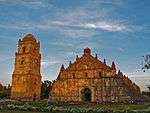 |
1993 | 677 |
| Santa Maria Church in Ilocos Sur | Unlike other town churches in the Philippines, which conform to the Spanish tradition of sitting them on the central plaza, the Church of Nuestra Señora de la Asuncion in Santa Maria with its convento are on a hill surrounded by a defensive wall. Also unusual are the sitting of the convento parallel to the facade of the church and that of the separate bell tower (characteristic of Philippine-Hispanic architecture) at the midpoint of the nave wall. This was dictated by the hill on which it is located. The brick church follows the standard Philippine layout, with a monumental facade masking a straight roof-line covering a long rectangular building. It is alleged to be built on a solid raft as a precaution against earthquake damage. The walls are devoid of ornament but have delicately carved side entrances and strong buttresses. | | ||||
| Miagao Church in Iloilo | The Church of Santo Tomas de Villanueva stands on the highest point of Miagao, its towers serving as lookouts against Muslim raids. It is the finest surviving example of 'Fortress Baroque'. The sumptuous facade epitomizes the Filipino transfiguration of western decorative elements, with the figure of Saint Christopher on the pediment dressed in native clothes, carrying the Christ Child on his back, and holding on to a coconut palm for support. The entire riotously decorated facade is flanked by massive tapering bell towers of unequal heights. |  | ||||
| San Agustin Church in Manila | The Church of the Immaculate Conception of San Agustín was the first church built on the island of Luzon in 1571, immediately after the Spanish conquest of Manila. A site within the district of Intramuros was assigned to the Augustinian Order, the first to evangelize in the Philippines. In 1587 the impermanent earliest building in wood and palm fronds was replaced by a stone church and monastery in stone, the latter becoming the Augustinian mother house in the Philippines. It was the only structure in Intramuros to survive the liberation of Manila in 1945. Miag-ao became an independent parish in 1731, when a simple church and convento were built. However, destruction of the town by Muslim pirates in 1741 and 1754 led to the town being rebuilt in a more secure location. The new church, constructed in 1787-97, was built as a fortress, to withstand further incursions. It was, however, damaged severely by fire during the revolution against Spain in 1898 and in the Second World War. Two bell towers were added in 1854, but the northern one cracked in the 1880 earthquake and had to be demolished. In the interior of the church the wall paintings date from the 19th century, but they overlie the original tempera murals. As a result, the church was richly endowed, with a fine retablo, pulpit, lectern and choir-stalls. Of special interest is the series of crypto-collateral chapels lining both sides of the nave. The walls separating them act as buttresses. The stone barrel vault, dome, and arched vestibule are all unique in the Philippines. A monastery complex was formerly linked to the church by a series of cloisters, arcades, courtyards and gardens, but all except one building were destroyed in 1945. | | ||||
| Cultural: (ii)(iv) | Historic Town of Vigan | Ilocos Sur | Established in the 16th century, Vigan is the best-preserved example of a planned Spanish colonial town in Asia. Its architecture reflects the coming together of cultural elements from elsewhere in the Philippines, from China and from Europe, resulting in a culture and townscape that have no parallel anywhere in East and South-East Asia. Vigan is an exceptionally intact and well-preserved example of a European trading town in East and South-East Asia. The architecture is truly reflective of its roots in both materials and design, in its fusion of Asian building design and construction with European colonial architecture and planning. The town is located in the delta of the Abra River, off the coastal plain of the China Sea, close to the north-east tip of the island of Luzon. The present-day municipality divided into nine urban districts and thirty rural villages. Almost half the total area is still in use for agriculture. The Historic Core Zone is defined on two sides by the Govantes and Mestizo rivers. |  |
1999 | 502 |
| Natural: (x) | Mount Hamiguitan Range Wildlife Sanctuary | Davao Oriental | Forming a north-south running mountain ridge along the Pujada Peninsula in the southeastern part of the Eastern Mindanao Biodiversity Corridor, the Mount Hamiguitan Range Wildlife Sanctuary has an elevation range of 75-1,637 m above sea level, and provides critical habitat for a range of plant and animal species. The property showcases terrestrial and aquatic habitats and the species that they host at a series of different elevations are responding to highly dissimilar soil and climate conditions. The Mount Hamiguitan Range Wildlife Sanctuary provides a sanctuary to a host of globally threatened and endemic flora and fauna species, eight of which are found nowhere else except Mount Hamiguitan. These include critically endangered trees, plants and the iconic Philippine Eagle and Philippine Cockatoo. | |
2014 | 1403 (Tentative: 5487) |
| Natural: (vii)(x) | Puerto Princesa Subterranean River National Park | Palawan | The site of the Puerto-Princesa Subterranean River National Park is located in the Saint Paul Mountain Range. It is north-west of Puerto Princesa, the capital of Palawan Province. The topography varies from flat plains to rolling hinterlands and hills to mountain peaks. Over 90% of the park comprises sharp, karst limestone ridges around Mount Saint Paul, which is itself part of a series of rounded, limestone peaks aligned on a north-south axis, along the western coast of Palawan. The focus of the area is a spectacular karst landscape which features both surface karst features (pinnacles, shafts, dolines and limestone cliffs), as well as an extensive underground river system. The subterranean river is 8.2 kilometres (5.1 mi) long, one of the most unusual of its type in the world and includes many speleotherms, several large chambers exist, up to 120 metres (390 ft) wide and 60 metres (200 ft) high. A distinguishing feature of the river is the fact that it emerges directly into the sea, and that the lower portion of the river is brackish and subject to tidal influences. The underground river (the Cabayugan River) arises approximately 2 kilometres (1.2 mi) south-west of Mount Saint Paul at an altitude of 100 metres (330 ft), and flows underground for almost its entire length to an outflow into Saint Paul's Bay. All rivers and associated tributaries are within the park, which is important in relation to catchments impacts on the water quality of the Cabayugan River. It has been declared as one of the New7Wonders of Nature. | |
1999 | 652 |
| Cultural: (iii)(iv)(v) | Rice Terraces of the Philippine Cordilleras | Ifugao | For 2,000 years, the high rice fields of the Ifugao have followed the contours of the mountains. The fruit of knowledge handed down from one generation to the next, and the expression of sacred traditions and a delicate social balance, they have helped to create a landscape of great beauty that expresses the harmony between humankind and the environment. The rice terraces of the Philippine Cordilleras are living cultural landscapes devoted to the production of one of the world's most important staple crops, rice. They preserve traditional techniques and forms dating back many centuries, still viable today. At the same time they illustrate a remarkable degree of harmony between humankind and the natural environment of great aesthetic appeal, as well as demonstrating sustainable farming systems in mountainous terrain, based on a careful use of natural resources. They are the only monuments in the Philippines that show no evidence of having been influenced by colonial cultures. Owing to the difficult terrain, the Cordillera tribes are among the few peoples of the Philippines who have successfully resisted foreign domination and preserved their authentic tribal culture. The history of the terraces is intertwined with that of its people, their culture, and their traditional practices. | 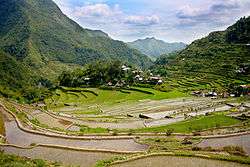 |
1995 | 722 |
| Natural: (vii)(ix)(x) | Tubbataha Reefs Natural Park | Sulu Sea | Tubbataha Reefs Natural Park lies in a unique position in the centre of the Sulu Sea, and includes the Tubbataha and Jessie Beazley Reefs. It protects an area of almost 100,000 hectares (250,000 acres) of high quality marine habitats containing three atolls and a large area of deep sea. The property is home to a great diversity of marine life. Whales, dolphins, sharks, turtles and Napoleon wrasse are among the key species found here. The reef ecosystems support over 350 species of coral and almost 500 species of fish. The reserve also protects one of the few remaining colonies of breeding seabirds in the region. |  |
1993 | 653 |
Tentative List
The following 19 sites are on the Tentative List for the Philippines, meaning that the government intends to consider them for nomination in the future:[1] In March 20, 2015, the UNESCO Tentative List of the Philippines was fully revised after recommendations from the UNESCO itself. The original Tentative List before the March 2015 Revision enlisted 28 sites. In October 2015, the National Commission for Culture and the Arts announced through their official Instagram account that they shall nominate the Sugar Centrals of the Philippines and related properties to the World Heritage List.
| Type (criteria) | Site | Location | Description | Image | Ref |
|---|---|---|---|---|---|
| Natural: (vii)(ix)(x) | Apo Reef Natural Park | Sulu Sea | Apo Reef is the second largest contiguous coral reef in the world and the largest in the Philippines. The Apo Reef Natural Park consists of the three islands. Apo Reef is the largest among the three islands. It has a shallow lagoon with a depth of 2 meters to 10 meters surrounded by mangrove forest which serves as source of food, nursery and spawning ground of several coastal and marine species of fauna and sanctuary of birds. Its diverse corals are approximately 34 square kilometres (13 sq mi) of reef where different species of fish, marine mammals and invertebrates thrive. Apo Reef, the largest atoll like reef in the Philippines, is a submerged platform that is a submerged of a 34 square kilometres (13 sq mi) sub triangular northern m and southern atoll like reefs separated by a 30-metre (98 ft) deep channel that is open to the west. The channel runs east to west from 1.8 m to 30 m deep with a fine white sand bottom numerous mounds and patches of branching corals under the deep blue water. | 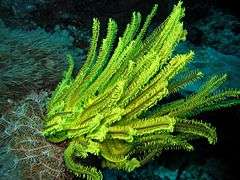 |
5033 |
| Cultural: (i)(iii)(iv)(v)(vi) | Baroque Churches of the Philippines (Extension)
|
Multiple locations | 1) Church complex of San Pedro Apostol, Loboc (Bohol)
The present church was first erected by the Jesuit Missionaries in the 18th century, then later taken over by the Augustinian Recollects who had their share of construction. The church complex is near the river and is composed of; the church structure, a three storey convent, a bell tower situated about 50 metres (160 ft) away from the front and a mortuary chapel at the complex's left side. The Jesuits designed the church with an intricately designed façade (though unfinished), every window has cherub designs under the opening. The Augustinian Recollects added a portico façade, buttresses, the bell tower and the mortuary chapel. The interior has; 18th and 19th centuries retablos, ceiling of the church is painted by indigenous artisans in the 1920s, a 19th-century pipe organ (restored in 2001). In the 19th century, the roof of the church is made of clay roof tiles. The walls are made of coral stone. 2) Church complex of Patrocinio de Maria, Boljoon (Cebu) The Augustinian Friars built the church of Patrocinio de Maria in the 18th century. The church and convent still uses clay roof tiles for its roof. The complex was a fortress church. Within the complex are; block house at the front left side of the complex served as a watch tower, a school at the left rear side built in the 1940s, series of wall ruins, and an 18th-century cemetery. Numerous church artifacts are intact. The ceiling painting was done by local painters in the 1920s. The church walls are made of coral stone. The façade is ornamented with ecclesiastic symbols. A pipe organ was installed in the 19th century at the choir loft. 3) Church of La Inmaculada Concepcion, Guiuan (Eastern Samar) The present church was first built by the Jesuit Missionaries in the 18th Century, later was taken over by the Franciscan Friars. The church complex is a fortress. Numerous parts of the church interior are decorated with seashells. It is unique in the country. The church still has its original front door, retablos, statues, and other church artifacts. The walls are made of coral stone. 4) Church of San Mattias, Tumauini (Isabela) The church walls are made entirely of brick. The façade is a magnificent display of the use ornamented brick laid out in characteristic design. Customized bricks were numbered, and placed customized to fit the walls. The interior of the church, similar to the façade is veneered with ornamented bricks. The upper half of the interior wall is laid with ornately designed brick blocks. 5) Church complex of San Isidro Labrador, Lazi (Siquijor) The church complex was built by the Augustinian Recollects in the latter half of the 19th century. The church has two pulpits, the original retablos, and wood floors with herringbone pattern. The church walls are approximately 1 metre (3 ft 3 in) thick, The walls are reinforced with log post which are embedded in the wall. The façade is veneered with coral stone, while the rest is made of fill. The pediments of the church are made of wood panels. |
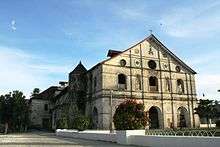 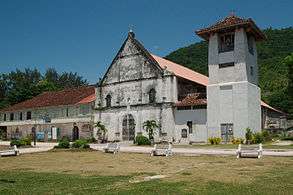 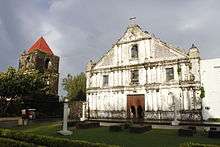 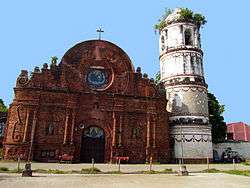 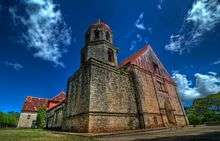 |
3860 |
| Mixed | Batanes Protected landscapes and seascapes | Batanes | Characterized by a complex of terrestrial, wetland and marine ecosystem, the Batanes group of islands consist of 10 small islands bounded by the Bashi Channel on the north, by the Philippine Sea on the east, by the South China Sea on the west and the Balintang Channel on the south. It is one of the last remaining areas in the Philippines having unique natural physiographic features (wave-cut cliffs, cave-like outcrops, secluded white sand beaches) resulting from its position where strong winds and fast currents have etched out its distinct morphology. It is an important flyaway for many migratory bird species, and the deeper portions of the marine environment are the few remaining sites where pink and red corals (Corallum sp.) are found. | 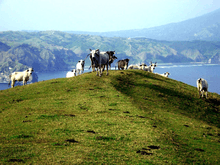 |
521 |
| Cultural: (iii)(iv)(v) | Butuan Archeological Sites | Agusan del Norte | In 1975, as a result of the construction of an extensive network of large drainage channels, or esteros, to relieve Butuan City from destructive annual floods, significant amounts of archaeological artifacts were discovered that dated back to the Age of Contact with the Great Traditions of Asia, co-eval with the Yueh type wares to Ming Dynasties of ancient China from the 10th Century to the 16th Century AD. The major finds in various areas is the appearance of the remains of large open-water-going boats, the "balanghai" of historical records. The same type of boats and construction has been recovered in Sumatra and Pontian in Malaysia, apparently of the same period. There eleven of these boats: three were fully excavated, two preserved, and the rest still unexcavated. The boats are of Neolithic architecture using a planking edge-peg technology. The boats range in age from the 10th to the 13th century AD. | 2071 | |
| Natural: (vii)(viii) | Chocolate Hills Natural Monument | Bohol | Chocolate Hills and its immediate environs are relatively flat to rolling topography with elevation ranges from 100 m to 500 m above sea level. It has been declared the country's 3rd National Geological Monument on June 18, 1988 in recognition of its scientific value and geomorphic uniqueness. Similar to the formations found in Java, the conical and almost symmetrical and same-sized hills known as the "Chocolate Hills", are more aesthetically extensive. These were the uplift of coral deposits and the result of the action of rainwater and erosion. The hills are located throughout the towns of Carmen, Batuan and Sagbayan and consist of about 1,776 mounds of the same general shape. During the dry season when precipitation in inadequate, the grass-covered hills turn chocolate brown, hence the name in reference to a branded confection. | 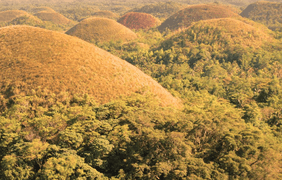 |
5024 |
| Mixed: (iii)(ix)(x) | Coron Island Natural Biotic Area | Palawan | Coron Island is roughly equidistant from Manila and Puerto Princesa City. The Island has a rugged topography, generally mountainous and its terrain marked by steep rock and ravines. Almost 70% of the area made up of rocky cliffs, 25% is rolling hills and 5% relatively flat. Out of the total area, approximately 18% is occupied by the Tagbanwa as residential and agricultural lands, as rock formations almost dominate the entire area. Large area is composed of Karst formations where swiftlets dwell and build their nest (birds nest). There are vertical limestone cliffs that reach up to 600 metres (2,000 ft) above sea level and eight (8) brackish lakes and three (3) smaller one's that have underground connections to the sea. Coron Island comprises two barangays, Banuang Daan and Cabugao, all of them belong to the Indigenous Cultural Communities. | 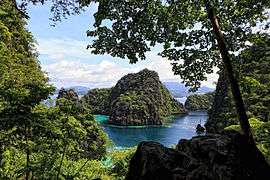 |
5035 |
| Natural: (ix)(x) | El Nido-Taytay Managed Resource Protected Area | Palawan | The El Nido-Taytay Managed Resource Protected Area is located on the north-western tip of the mainland of Palawan. In 1991, the Government of the Philippines proclaimed Bacuit Bay as a marine reserve. In 1998, the protected area was expanded to include terrestrial ecosystems and portions of the municipality of Taytay. It is now known as El Nido-Taytay Managed Resource Protected Area, which covers over 36,000 hectares (89,000 acres) of land and 54,000 hectares (130,000 acres) of marine waters. It contains towering limestone cliffs, beaches, mangroves, clear waters, unique forests over limestone and neat farmlands. It is home to five (5) species of mammals, including the Malayan pangolin and 16 bird species endemic to Palawan including the threatened Palawan peacock-pheasant, the Palawan hornbill and Palawan scops owl. | 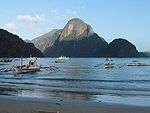 |
5034 |
| Cultural: (i)(ii)(iii)(iv)(v)(vi) | Kabayan Mummy Burial Caves | Benguet | Kabayan is one of the municipalities of Benguet Province in the Cordillera Mountain Range of northern Luzon. The municipality is recognized as a center of Ibaloi Culture. The Ibaloi, the dominant ethno-linguistic group of Kabayan, have a long traditional practice of mummifying their dead. Mummification began prior to the Spanish colonization. Individuals from the higher societal stratum of the Ibaloi of Kabayan used to be mummified through a long ritual process over a long period of time. The process of mummification using salt and herbs and set under fire may take up to two years. When the body is finally rid of body fluids, the mummy is placed inside a pinewood coffin and laid to rest in a man-made cave or in niche dug-out from solid rock. | 2070 | |
| Natural: (vii)(x) | Mayon Volcano Natural Park (MMVNP) | Albay | The Mayon Volcano is situated in the southern part of the main island of Luzon, 500 kilometres (310 mi) south of Manila. Towering at a height of 2,462 metres (8,077 ft) above sea level, it is known for its perfectly conical shape whose natural beauty has inspired a number of legends and art. The most active volcano in the Philippines and one of the most active in the world, having erupted over 51 times in the past four centuries, the most destructive of which is in 1814 when five towns in its periphery were destroyed. Nevertheless, it has developed a culture of resiliency among the inhabitants of its vicinity, who always rebuilt their towns and cultivated their fields after each destructive eruption. |  |
6007 |
| Natural: (ix)(x) | Mounts Iglit-Baco National Park | Mindoro | The Mts. Iglit-Baco National Park (MIBNP) was proclaimed through Republic Act No. 6148 dated Nov. 11, 1970. As such, it is an initial components of National Integrated Protected Areas System under. Mts. Iglit-Baco NP encompasses at least eight (8) major river systems and has a rugged terrain composed of slopes, river gorges and plateaus. Portions of the Park are covered by upland hardwoods, such as Anthocephalus chinensis, Artocarpus blancoi, Ficus nota, Hawili, Alibangbang and Balinghasai. The larger plants indigenous to the site which are rarely seen in some other regions are Kalantas tree, Tindalo, Almaciga and Kamagong. The Park also harbors the endangered Jade vine (Strongylodon macrobotrys). The Park is the habitat of the endemic Tamaraw (Bubalus mindorensis), which is one of the most seriously endangered large mammals. Because of the endangered Tamaraw, the Park was initially established as "game refuge and bird sanctuary". The Park has been declared as an ASEAN Heritage site. | 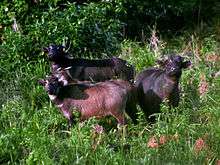 |
5036 |
| Natural: (vii)(ix)(x) | Mount Malindang Range Natural Park | Misamis Occidental | Mt. Malindang is a mountain range rising from 600 metres (2,000 ft) to 2,404 metres (7,887 ft) above the mean sea level. The range covers 53,262 hectares (131,610 acres) of which about 33,000 hectares (82,000 acres) is still covered with forest vegetation while more than 20,000 hectares (49,000 acres) is cultivated and inhabited by forest occupants mostly members of the Subanen Tribe. The forest vegetation is composed of highly diverse species of and plants dominated by dipterocarps. It is inhabited by diverse species of fauna including the rare ones such as the Philippine Eagle (Pithecophaga jefferyi), Rufous Hornbill (Buceros hydrocorax), Tarsier (Tarsius philippinensis) and Flying Lemur (Cynocephalus volans). The mountain range was believed to be formed through series of volcanic activities within the historical times but was not well documented. Several indicators of such activities are found in the site. These include six (6) hectare of Crater Lake (Lake Duminagat) and two (2) big sunken areas (more than 20 hectares or 49 acres each) surrounded by high rock walls, cinder cones, dome volcanic plugs, amphitheater structures, extensive distribution of volcanic rocks, carbonized wood found in pyroclastic deposits and two sulfuric hot springs. |  |
5029 |
| Natural: (ix)(x) | Mount Mantalingajan Protected Landscape | Palawan | Nestled in the southern part of the Palawan Man and Biosphere Reserve is the Mt. Mantalingahan Protected Landscape (MMPL), a protected area through Presidential Proclamation 1815 signed on June 23, 2009. It covers a total area of 120,457 hectares (297,660 acres) within the territorial jurisdiction of the municipalities of Bataraza, Brooke’s Point, Quezon, Rizal, and Sofronio Española. The peak of Mt. Mantalingahan towering at 2,085 metres (6,841 ft) above sea level is the highest peak in the province and considered sacred by the indigenous Palawan people. | 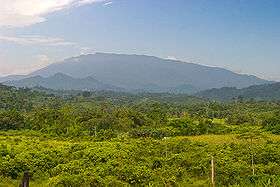 |
6006 |
| Natural: (ix)(x) | Mount Pulag National Park | Luzon | Mt. Pulag National Park lies on the north and south spine of the Grand Cordillera Central that stretches from Pasaleng, Ilocos Norte to the Cordillera Provinces. It falls within the administrative jurisdiction of two (2) Regions: Cordillera Administrative Region (CAR) and Cagayan Valley (R2). The whole park is located within the Philippine Cordillera Mountain Range and is very rugged, characterized by steep to very steep slopes at the mountainsides and generally rolling areas at the mountain peak. Mt. Pulag is the highest peak in Luzon and is the second highest mountain in the Philippines with an elevation of 2,922 metres (9,587 ft) above sea level. The summit of Mt. Pulag is covered with grass and dwarf bamboo plants. |  |
5030 |
| Cultural: (ii)(iii)(iv)(v) | Neolithic Shell Midden Sites in Lal-lo and Gattaran Municipalities | Cagayan | Neolithic shell midden sites are located along the banks of the Cagayan River in the Municipalities of Lal-lo and Gattaran, about 500 kilometres (310 mi) northeast of Manila. The shell middens are in varying sizes and extent; and made up mostly of one type of freshwater clams, Batissa childreni. The biggest deposits of shells are found in Magapit and Bangag in Lal-lo. The thickest is more than 6 feet (1.8 m). Associated with these shell middens are polished stone tools, chert flakes, bones and teeth, and red slipped earthenware with incised and impressed designs. Most of stone tools are ground, polished with a trapezoidal cross-section; and made of sandstone, claystone and shale. In Magapit, Lal-lo, the shell middens are centrally or strategically located on top of the highest hill, panoramic views down stream on the north and up stream on the south can be seen. In some areas, burial grounds are found associated with earthenware in varying forms and designs. Carbon dating indicates first and second millennium B.C. for limestone shell midden and ca. 100 AD in the river banks shell midden. | 5019 | |
| Natural: (ix)(x) | Northern Sierra Madre Natural Park and outlying areas inclusive of the buffer zone | Isabela | The Northern Sierra Madre Natural Park (NSMNP) is within the Sierra Madre Biogeographic Zone (SMBGZ) which lies along the eastern side of Central Luzon. The Northern Sierra Madre Natural Park (NSMNP) is one of the ten (10) priority protected areas in the country, and is considered one of the most important of the protected areas system of the Philippines. It is the largest protected area in the country and the richest in terms of genetic, species and habitat diversity. The importance of the park is underscored by the myriad of rare and endangered species of flora and fauna that it supports. These include the Philippine Eagle (Pithecophaga jefferyi), Giant golden-crowned flying fox (Acerodon jubatus), Philippine eagle-owl (Bubo philippensis), Isabela Oriole (Oriolus isabellae), Green sea turtle (Chelonia mydas), Loggerhead Turtle (Caretta caretta), Hawksbill Turtle (Erethmochelys imbricata), Philippine Crocodile (Crocodylus mindorensis) and Dugong (Dugong dugon). |  |
5037 |
| Cultural: (ii)(iii)(iv)(v) | Paleolithic Archaeological Sites in Cagayan Valley
|
Cagayan Valley | Paleolithic sites are located within the Cagayan Valley Basin which is bordered by the Sierra Mountain range on the East; the Caraballo on the South; the Cordillera Central on the west; and the Babuyan Channel on the north. Found in two municipalities of the province, namely, Solana and Peñablanca. Paleolithic sites yielded the earliest stone tools and remains of extinct and extant species of animals. Archaeological excavations undertaken in Solana and vicinities resulted in the discovery of more than 68 Paleolithic sites in the Awidon Mesa formation. These sites yielded stone tools and fossils of extinct animals that include stegodons, elephants, rhinoceros, and large tortoise. The sites tended to confirm previous reports by prominent paleontologists and archaeologists from Europe that both Pleistocene mega-fauna fossils and chopper-chopping stone tools were present in the valley, suggesting mid-Pleistocene date for tool technology in the area at the earliest and later periods. | .jpg) |
2069 |
| Cultural: (iii) | Petroglyphs and Petrographs of the Philippines
|
Multiple locations | These petroglyphs are of animate figures interpreted as representing juveniles or infants on a rock face in a rock shelter. The shelter is located southeast of the city of Manila, three kilometers from the town of Angono, and some 235 meters above sea level. The shelter if formed by quaternary volcanics, located on the eastern limb of an anticline. The cave faces 305 degrees west and measures 632. 84 meters, 4.68 meters in height and 8.2 meters in depth. The cave was formed at the close of the Pleistocene, early part of the Holocene, at a period when the quaternary alluvium was not yet extensive.
The petroglyphs occupy 25 meters of the rockwall with a height of 3.7 meters from the floor level. The engravings are executed into all the available space on the wall with no orientation nor association with one another. There are no relationships in scale and size, and no baseline. The engravings are made on the tuff layer of the wall with "v" and "u" cross sections, depending on the sizes of the images, the largest of which is 63 centimeters. There is no attempt at making relieves. The general typology of the images is a rounded head on a narrow neck, rectangular body with a lower taper, linear flexed limb with three digits each. There is a total of 127 still discernable figures. There are non-cognitive incisions. There are 51 distinct types. The engravings are not decorative but are symbolic representations, executed by different individuals using a single mental template, apparently with the same cultural persuasion. Associated with healing and sympathetic magic. The dating of the petroglyphs is probably late Neolithic Age. Only highly fragmented low-fired pottery was recovered, a number of Paleolithic cobble and flaked tools, and Neolithic Age polished adzes. The Philippine Neolithic ranges from 6000 BC to 2000 BC. The other set of Petroglyphs are those found in Alab, Mountain province carved on boulders on top of promontories. The configurations are those of pudenda. The dating is relatively later and placed at not earlier than 1500 BC or even later. The Petrographs are of two kinds: a) Charcoal drawings on cave walls in Penablanca, Cagayan Province, and the Singnapan Caves in southern Palawan; b) red hematite prints in Anda Peninsula, Bohol province. The dating of these is still undetermined. Petroglyphs are more rare in Southeast Asia where most rupestrine art is done through hand prints or paintings. Often petroglyphs are translated into petrographs, e.g. the Angono ones are found drawn with charcoal in the Bato Caves of southern Sarawak, and in southern Thailand. The petrographs in terms of handprints are very rare in the Philippines compared to those found in Sarawak, Sulawesi, Jave, Pontian Malaysia, and the very extensive red hematite rock art found in the banks of Mekong River between Thailand and Cambodia. Other major rupestrine art are found in the Pacific World done by Polynesians, Australia among the Bushmen, in Spain and France. All these New and Old World sites are well-documented. |
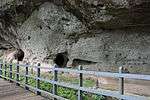 |
5018 |
| Cultural: (ii)(iii)(iv)(v) | The Tabon Cave Complex and all of Lipuun | Palawan | The Tabon Cave Complex and all of Lipuun Point is located on the west coast of Palawan. It is located on a limestone promontory which is visible from any direction for many kilometers and honeycombed with at least 200 caves and rockshelters. This point is called Lipuun by the local people but marked "Abion Head" on charts made from British surveys in 1851. The point is about 104 hectares (260 acres) in area and is formed by a number of rounded limestone domes separated by deep chasms. The some 200 caves located in the limestone formation are collectively known as the "Tabon Caves", after the main cave, called "Tabon", so named after a megapode bird that digs its nest into the ground. This was the site to first establish the presence of humans in the Philippines during the Pleistocene. The different cave sites document through a corpus of C-14 dates a virtually continuous occupation between at least 50,000 years ago and ca. 9,000 BP, which have been widely cited (Bellwood 1997, Bulbeck 1981, Galipaud and Semah 1993) because the Tabon Cave is one of the very few sites in Southeast Asia to have yielded Pleistocene fossil Homo sapiens. The data provide new chronological data on the questions of Pleistocene Homo sapiens settlement on the margins of Sundaland. | |
1860 |
| Natural: (ix)(x) | Turtle Islands Wildlife Sanctuary | Tawi-Tawi | Turtle Islands is part of the Sulu Archipelago, which comprises approximately 400 islands of varying shapes and sizes. It is located at the southwestern tip of the Philippines, about 1,000 kilometres (620 mi) southwest of Manila. The Protected Area is situated between coordinates 4° 30′ and 5° 20′ north latitude and 199° 25′ and 121° 52′ east longitude. On the west and north, it is bounded by the Sulu and Mindanao Seas, and on the east and south, by the Celebes Sea. The group of islands includes Boan, Lihiman, Langaan, Great Bakkungan, Taganak, and Baguan. It has a total aggregate area of 241,495.92 hectares (596,749.4 acres), of which 298.27 hectares (737.0 acres) correspond to the land portions of the sanctuary. The smallest island, Langaan, measures about 7 hectares (17 acres), while the largest, Taganak Island, is about 124 hectares (310 acres). Generally, the TIWS topography ranges from flat, low hills, and plateau, to features reaching as high as 150 metres (490 ft) above sea level. | 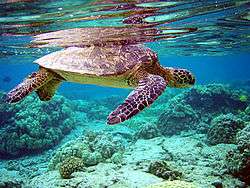 |
6008 |
Transboundary Nomination in the Making
An Experts’ Roundtable Meeting was held at the University of Santo Tomas (UST) on April 23, 2015 as part of the preparation of the Philippines for the possible transnational nomination of the Manila-Acapulco Galleon Trade Route to the World Heritage List. The nomination will be made jointly with Mexico.
The following are the experts and the topics they discussed during the roundtable meeting: Dr. Celestina Boncan on the Tornaviaje; Dr. Mary Jane A. Bolunia on Shipyards in the Bicol Region; Mr. Sheldon Clyde Jago-on, Bobby Orillaneda, and Ligaya Lacsina on Underwater Archaeology; Dr. Leovino Garcia on Maps and Cartography; Fr. Rene Javellana, S.J. on Fortifications in the Philippines; Felice Sta. Maria on Food; Dr. Fernando Zialcita on Textile; and Regalado Trota Jose on Historical Dimension. The papers presented and discussed during the roundtable meeting will be synthesized into a working document to establish the route’s Outstanding Universal Value.[2]
| Type (criteria) | Site | Location | Description | Image | Ref |
|---|---|---|---|---|---|
| Mixed | The Historic Manila‑Acapulco Galleon Trade Route | Philippines and Mexico |  White represents the route of the Manila Galleons in the Pacific |
[2] |
Members of the Organization of World Heritage Cities Programme
The Philippines has currently 2 cities that are members of Organization of World Heritage Cities, a more than 250-city member organization. The first was the city of Vigan in Ilocos Sur followed by the municipality of Miagao in Iloilo.[3]
| City | Province | Description | Image | Ref |
|---|---|---|---|---|
| Vigan | Ilocos Sur | The whole city of Vigan is inscribed in the UNESCO World Heritage List as the Historic City of Vigan. |  |
[3] |
| Miagao | Iloilo | The municipality of Miagao is the location of one of the four Baroque Churches of the Philippines inscribed in the UNESCO World Heritage List. |  |
[3] |
Former UNESCO Tentative Sites Before the March 2015 Revision
| Type (criteria) | Site | Location | Description | Image | Ref |
|---|---|---|---|---|---|
| Natural: (ix)(x) | Agusan Marsh Wildlife Sanctuary | Agusan del Sur | 5023 | ||
| Cultural: (i)(iii)(vi) | The Maranao Settlement at Tugaya | Lanao del Sur | 5017 | ||
| Natural: (vii)(viii)(x) | Taal Volcano Protected Landscape | Batangas | 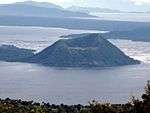 |
5026 | |
| Cultural: (ii)(iii) | Spanish Colonial Fortifications of the Philippines
|
Multiple locations | |
520 | |
| Natural: (ix)(x) | Panglao Island | Bohol | 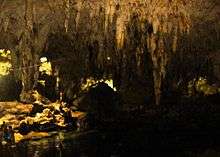 |
5027 | |
| Cultural: (i)(ii)(iv) | San Sebastian Church | Manila | 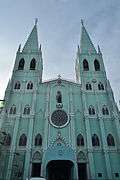 |
518 | |
| Natural: (ix)(x) | Liguasan Marsh | Central Mindanao |  |
5025 | |
| Natural: (x) | Mount Apo Natural Park | Davao del Sur | 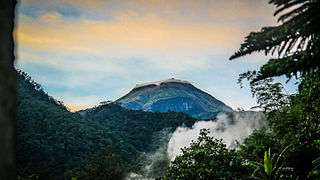 |
5485 | |
| Cultural: (iv) | Jesuit Churches of the Philippines (Extension)
|
Multiple locations | This group submission used to contain Guiuan Church of Eastern Samar and Loboc Church of Bohol as well. Those two churches are still in the tentative list, part of Baroque Churches of the Philippines (Extension). |  |
514 |
| Natural: (x) | Mount Matutum Protected Landscape | Davao del Sur South Cotabato |  |
||
| Natural: (x) | Mount Kitanglad | Bukidnon | |
Both Guiuan Church of Eastern Samar and Loboc Church of Bohol, despite being heavily damaged by the Bohol Earthquake and Supertyphoon Haiyan in 2013, are still considered part of the Philippines' UNESCO Tentative List as part of the Five churches in the 'Baroque Churches of the Philippines (Extension)'. Baclayon Church of Bohol, on the other hand, was almost completely destroyed and suffered the worst destruction of a National Cultural Treasure through natural calamity. It is being restored, like all other heritage sites affected by the series of calamities in 2013, by the National Museum of the Philippines.
The Maranao Settlement of Tugaya was suggested by UNESCO to be submitted in the future by the Philippines as a UNESCO Intangible Cultural Heritage instead.
Mount Apo Natural Park, Panglao Island, and Taal Volcano Protected Landscape were removed from the Tentative List because their original features, as stated in the submissions, do not show their current features due to the massive disturbances in the park. Resubmitting the sites through revision of its features is a possible move to gain back their Tentative status.
The Angono Petroglyphs have been formally infused in the UNESCO Tentative site of 'Petroglyphs and Petrographs of the Philippines', which includes four other sites from all over the country.
San Sebastian Church of Manila, Spanish Colonial Fortifications of the Philippines, Agusan Marsh Wildlife Sanctuary, Liguasan Marsh, Mount Matutum Protected Landscape, and Mount Kitanglad undergo a stringent process upon review; and some would have a hard time meeting the criteria set by the World Heritage Committee (WHC). Due to this, they were removed from the list. Bulking Mount Matutum with other national parks in south central Mindanao, like Indonesia did for their Tropical Rainforest of Sumatra nomination bid, is recommended. Similar nominations to bulk national parks in north central Mindanao, eastern Mindanao, eastern Visayas, the Philippine Cordilleras, northern Sierra Madre, southern Sierra Madre, Panay-Negros, Zambales-Bataan, Sulu faunal region, and other rainforest cluster regions in the country are also recommended.[4]
See also
References
- ↑ "Tentative Lists: Philippines". UNESCO. Retrieved 28 March 2012.
- 1 2 "PH, Mexico push to nominate Manila-Acapulco Galleon Trade Route to World Heritage List". Official Gazette of the Republic of the Philippines. 28 April 2015. Retrieved 9 November 2015.
- 1 2 3 "Cities". Organization of World Heritage Cities. Retrieved 9 November 2015.
- ↑ Sembrano, Edgar Allan M. (4 August 2014). "Bohol, Samar churches removed from Unesco World Heritage nomination". Philippine Daily Inquirer. Retrieved 9 November 2015.
External links
-
 Media related to World Heritage Sites in the Philippines at Wikimedia Commons
Media related to World Heritage Sites in the Philippines at Wikimedia Commons - Facts About Philippine Wonders of Nature
- UNESCO World Heritage Sites — Official site
- UNESCO World Heritage Centre — Official site
.svg.png)

